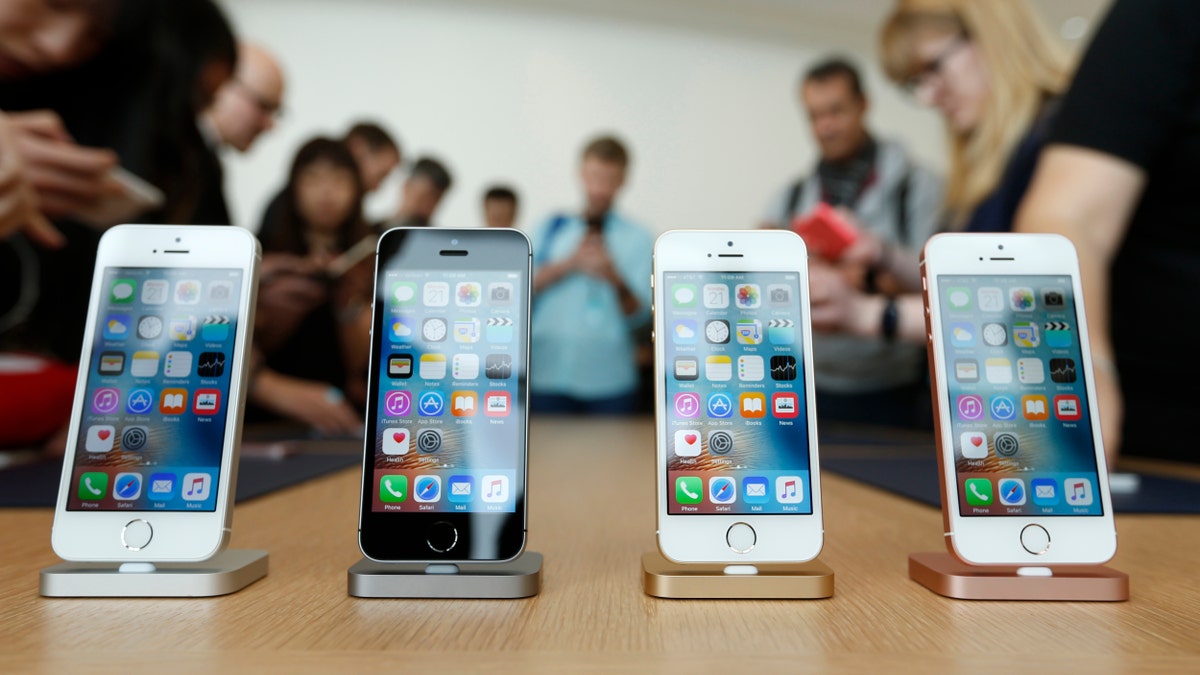
The new iPhone SE is seen on display during an event at the Apple headquarters in Cupertino, Calif. March 21, 2016. (REUTERS/Stephen Lam)
Though Apple's iPhone SE was the talk of last weekbasically, a smaller version of its iPhone 6S with a slightly worse front-facing camera, no 3D Touch, and no 128GB version you can buyeyes are turning toward what Apple might pack into its major follow-up to the iPhone 6S, presumably Apple's iPhone 7.
According to a new note from KGI Securities analyst Ming-Chi Kuo, Apple is possibly going to be using a new, curved glass case for its next iPhone. The iPhone would have metal sides, but thinner bezels that help provide a more comfortable grip. In general, it's going to be a "completely new form factor design," Kuo writes, as reported by 9to5Mac.
More importantly, Apple will allegedly switch over to an AMOLED display from its iPhones' current LCD displays. AMOLED displays can be much more power-efficient, so Apple could either give its iPhones a bit of a battery boost or possibly keep the same overall battery life and pack in more powerful components. Additionally, AMOLED displays are thinner and more flexible than LCD displays, which would do well in Apple's rumored curved iPhone 7 design.
The major issue with an AMOLED iPhone is supply, however. If manufacturers can make enough displays, Apple might release a 5.8-inch iPhone that replaces its current 5.5-inch form factor. If not, it's possible that Apple could just make an iPhone variant with an AMOLED display, but not make that a default option for all new iPhones.
"If the supply of AMOLED panel is sufficient, we believe it is more likely that the first scenario will happen, in which case a 5.8-inch AMOLED model will entirely replace the 5.5-inch TFT-LCD iPhone," said Kuo, in a note released to investors.
Kuo is also predicting that Apple will pack wireless charging into the iPhone 7, but it's unclear whether Apple will adopt a proprietary mechanism for doing so or whether it'll play nicely with some of today's more mainstream wireless charging formatslike PMA, Rezence, and Qi, for example. Apple might also build some kind of face-recognition system, and possibly even Mission Impossible-like iris scanning, into its next iPhones. We don't yet know if that would just give iPhone owners another convenient way to unlock their devices or whether Apple is trying to give iPhone owners a second option that's as secure as one of Touch ID's fingerprint scans.
This article originally appeared on PCMag.com.




















